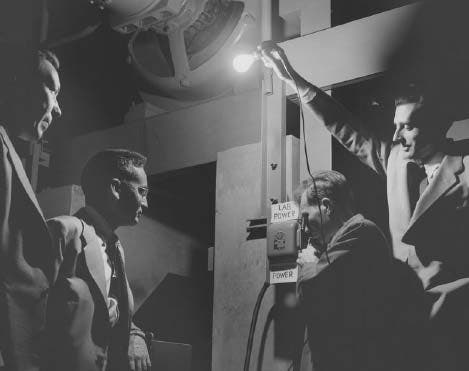Prelude to War
1933-1939
With fascism on the rise in Europe, an exodus of Jewish scientists occurs. The ability to generate energy from atoms is discovered.
January 1933
On the morning of January 30, in German President Paul von Hindenburg’s office, Adolf Hitler was sworn in as Chancellor. Hindenburg died in August 1934 and Hitler seized total control of the government. Over the next several years many Jewish scientists fled Germany and other European countries in the wake of state-sponsored anti-Semitism.
January 1934
French scientists Frédéric and Irène Joliot-Curie, daughter of Marie Curie, published their discovery of artificial radioactivity in Comptes Rendus de l'Académie des Sciences. The husband and wife team bombarded boron, aluminium, and magnesium to produce isotopes of these elements not found naturally. This discovery led to the production of cheap and plentiful radioactive materials for medical purposes.
January 1939
Otto Hahn and Fritz Strassmann, chemists at the Kaiser Wilhelm Institute of Chemistry in Berlin, reported in Naturwissenschaften that they had unexpectedly detected the element barium after bombarding uranium with neutrons. The presence of barium, a lighter element that uranium, suggested the splitting of the uranium nucleus.
February 1939
Lise Meitner and her nephew Otto Frisch published a theoretical interpretation of the Hahn-Strassmann results in Nature. In the article they introduced the term “fission” to describe the splitting of a nucleus to produce energy in a nuclear chain reaction.
October 1939
Economist Alexander Sachs, a friend of President Franklin D. Roosevelt, hand delivered a letter to FDR written by Albert Einstein, living in Long Island, New York, with help from Hungarian émigré physicist Leo Szilard. Einstein advised the President that recent research into fission revealed it was possible to produce a nuclear chain reaction with a bomb, Germany was most likely working on it, and that the United States should actively support this research.

